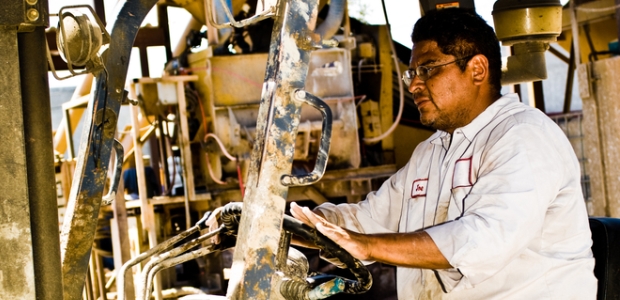
NIOSH, ASSE Release 'Overlapping Vulnerabilities' Report
It examines why Latino immigrants under age 25 are at increased risk for injury and death when working for small firms in the construction industry.
"Overlapping Vulnerabilities: The Occupational Health and Safety of Young Immigrant Workers in Small Construction Firms" is the title of a new report from NIOSH and ASSE Report examining why Latino immigrant workers younger than 25 who are employed by small construction firms have higher injury and fatality rates than those of the construction industry as a whole. Their rates are higher than the rates of almost any other employee segment or industry in the United States, it shows.
"The safety community and the construction industry must take note of this report and work together to improve the safety conditions outlined in it," said ASSE President Trish Ennis. "ASSE & NIOSH commit to partner with interested parties across the country to develop effective solutions that will allow Hispanic immigrants and small business owners to thrive in a safe work environment."
The report identifies workers with overlapping vulnerabilities as being members of two or more at-risk groups, such as immigrants, temporary workers, new workers, older workers, small business employees, and non-union workers. "Each vulnerability has characteristics that add unique barriers to the worker's safety and health on the job . . . or that intensify existing barriers to safety that are common for all workers (such as lack of training in small businesses due to financial constraints)," the report states, adding that these vulnerabilities are independently associated with additional risks of workplace injury or illness.
In 2013, it states, Latino immigrants accounted for approximately 20 percent of the U.S. construction workforce, and 75 percent of all Latinos working in the industry were immigrants, according to the U.S. Census Bureau. "The rapid growth in the number of Hispanic immigrant workers in the construction industry has been accompanied by increased numbers of occupational injuries. The number of cases of nonfatal injury or illness among Hispanic construction workers nearly doubled (from 17,715 to 33,930) from 1992 to 2006 [Dong et al. 2010]. From 2003 to 2008, the occupation groups with the highest fatality rate for Hispanic construction workers were ironworkers (135 deaths per 100,000 FTEs), roofers (28 deaths per 100,000 FTEs), and laborers (22 deaths per 100,000 FTEs)," it states. "Hispanics were the only ethnic group to see an increase in the number of workplace fatalities in 2013. Prior studies have shown that because of their work in dangerous occupations, Hispanic immigrant workers experienced a higher occupational mortality rate (5.9 per 100,000 full-time employees) than all other workers (4.0 per 100,000 full-time employees), according to statistics collected from 1992-2006."
"Improving the health and safety of vulnerable populations recognizes that occupational hazards are distributed differentially," said NIOSH Director Dr. John Howard, M.D. "This collaborative effort provides a foundation that addresses the specific needs of small businesses, minority populations, and the many young workers who dedicate themselves to their work."
The report states that many immigrants are unfamiliar with the risks they face on the job, unaware of standard safety procedures, receive little or no job training, do not speak or comprehend English, and may have work styles different from their co-workers and employers.
ASSE and NIOSH plan to work with community groups, national safety organizations, U.S. safety agencies, and Latin American consulates where these Hispanic immigrants originate to provide the tools this employee group and its employers need to better manage hazards in the construction industry. "The report is a starting point," ASSE's Ennis said. "ASSE and NIOSH look forward to making recommendations that will improve safety and save lives in the construction industry."
For more information and resources related to this report, please go to www.asse.org/workersatrisk.